Connect Your Phone to Firestick Without a Remote
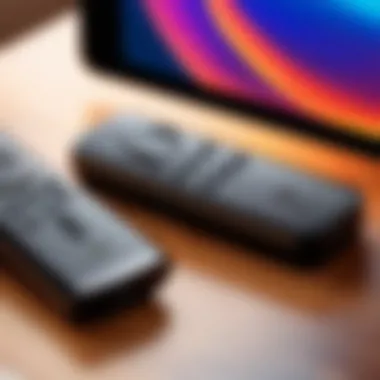
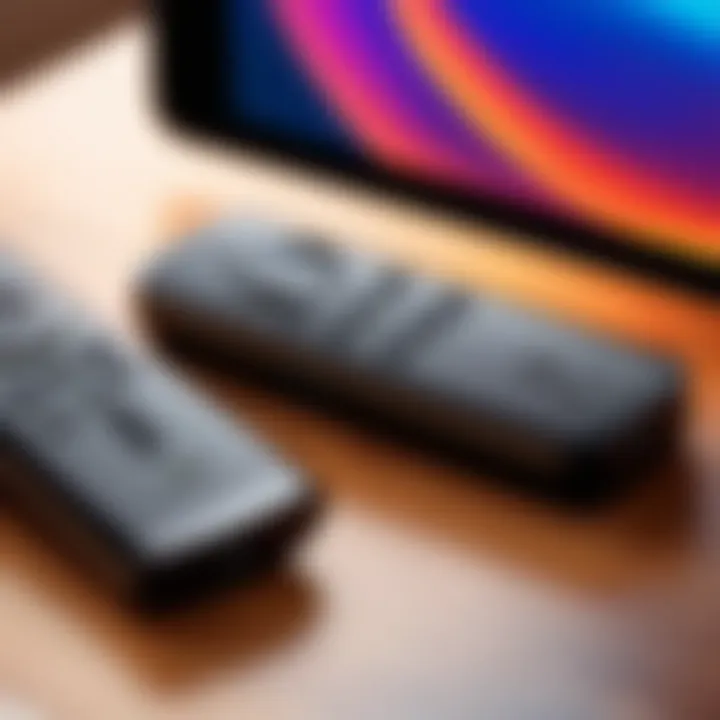
Intro
In the age of digital convenience, managing entertainment devices has never been more essential. With folks relying heavily on their smartphones, integrating these devices with streaming solutions like Amazon Firestick often feels like second nature. However, there are times when the trusted remote goes missing, and frustration mounts. Fear not, as connecting your phone to a Firestick without that pesky remote is not only possible; it can also be surprisingly straightforward.
This guide takes a dive into diverse methods that empower you to control your Firestick using your phone. Whether you’re a tech-savvy individual or just someone trying to make their life a tad easier, we’ve got you covered. Let's explore the vital steps, tips, and potential snags you might encounter along the way.
Product Overview
Key Features
When considering the functionality of the Amazon Firestick, several features stand out:
- Streamlined Interface: User-friendly menus make it easy to navigate through all available content.
- Voice Control: Using Alexa capabilities allows hands-free operation, adding another layer of convenience.
- Wide Compatibility: Works seamlessly with various apps and devices, ensuring a robust entertainment experience.
Specifications
Here are some specifications that might influence your connection experience:
- Storage: Depending on the model, storage might range from 8GB to 16GB.
- Wi-Fi Compatibility: Dual-band Wi-Fi support is essential for smooth streaming.
- HDMI Capability: Most models come with HDMI ports, allowing for easy integration with televisions.
Performance Analysis
Speed and Efficiency
When connecting your phone to the Firestick, responsiveness is key. Historically, users have found that the connection speed is largely determined by network settings and device capabilities. A stable Wi-Fi connection can lead to minimal lag when using your phone as a remote control. Doing a quick check of your internet’s speed can provide insights into potential issues.
Battery Life
It's worth noting how using your phone to control Firestick impacts battery life. Many users report a slight drain, particularly when running third-party applications. Keeping your device charged is advisable, especially during binge-watching sessions.
"Technology should remove obstacles, not create them. Sometimes the simplest solutions are the most effective."
By exploring methods to connect your mobile device to the Firestick, you open the door to a simpler, more enjoyable entertainment experience. Maintaining good practices will ensure that your connection is as smooth as butter, even when the remote seems to be playing hide and seek.
Understanding the Firestick and Its Functionality
Grasping the essence of the Firestick and its functionality is essential for anyone looking to enhance their entertainment setup. This device is not just a streaming tool; it's a potent entertainment hub that transforms your regular TV into a smart one. Understanding how it fits into the broader ecosystem of home entertainment can significantly impact your user experience.
Overview of the Amazon Firestick
The Amazon Firestick is a compact streaming media player that connects directly to your TV’s HDMI port. It allows users to access a myriad of streaming services like Prime Video, Netflix, Hulu, and countless others, right off their television screens. Think of it like a USB drive housing a small computer that’s entirely geared towards streaming content.
This plug-and-play device is more than just a means to watch shows or movies; it does wonders by integrating with smart home features. For example, if you have smart devices, you can command your Firestick through Alexa-enabled devices, creating a seamless flow in your home entertainment.
Common Features and Use Cases
When delving into the common features of the Firestick, it’s clear that its versatility caters to a range of preferences. Here’s a peek into what this device offers:
- Vast Library Access: With services like Amazon Prime, you get not only movies and TV shows but also options for live TV and music streaming.
- User Friendly Interface: The home screen’s layout is designed for easy navigation, allowing users to quickly find their favorite apps and content.
- Voice Control: This is a game changer. Instead of scrolling through endless lists, just speak your request, and let Alexa do the leg work.
- Screen Mirroring: Sharpen your focus on shared content by mirroring your smartphone or tablet to the TV, perfect for parties or family gatherings.
In practical terms, the Firestick is particularly popular among cord-cutters—those who are ditching traditional cable television in favor of on-demand content. Given the rise of subscription services, owning a Firestick not only provides entertainment but can also be a cost-effective way to access a variety of programming.
This foundational understanding sets the stage for exploring various methods of connecting your phone to the Firestick, especially when it comes to scenarios where the remote has gone awry, ensuring you don’t miss a beat in your viewing experience.
Challenges of Using a Firestick Without a Remote
Navigating the tech world presents unique hurdles, and using a Firestick without a remote is no exception. The Firestick, while a powerful streaming device, relies on user-friendly interaction that becomes complicated in the absence of its intended controller. This section dives into the essential challenges faced by users when they find themselves disconnected from their remote.
Facing difficulties with the initial setup and various aspects of day-to-day operation can really put a damper on user experience. Grasping the troubleshooting concepts helps to navigate this challenge, allowing for adjustments and alternative methods to connect your smartphone.
Initial Setup Difficulties
Establishing the Firestick for the first time without the remote can be a hassle. Unlike conventional setups that allow straightforward connection with the remote, here, you must get creative. The first barrier one encounters is the lack of direct control over the device to finalize the initial setup. Without the remote, navigating the early setup screens proves tricky, often requiring a series of strategic moves to access the Wi-Fi configurations essential for functionality.
Additionally, the process dramatically varies based on the device settings. If your Firestick hasn’t been previously linked to your Wi-Fi, it sits idle. Many users stumble in this setup stage, growing frustrated when their expected solutions fall flat. Their eyes may wander towards options like the Amazon Fire TV app, yet without a quick understanding of the steps, it can feel like piecing together a puzzle with missing parts.
Remote Loss and Replacement Options
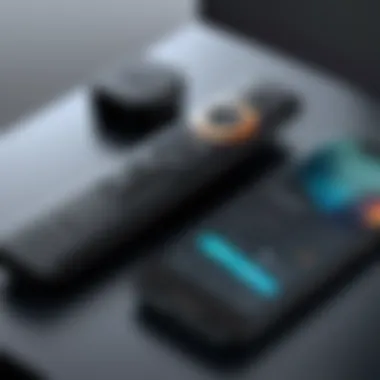
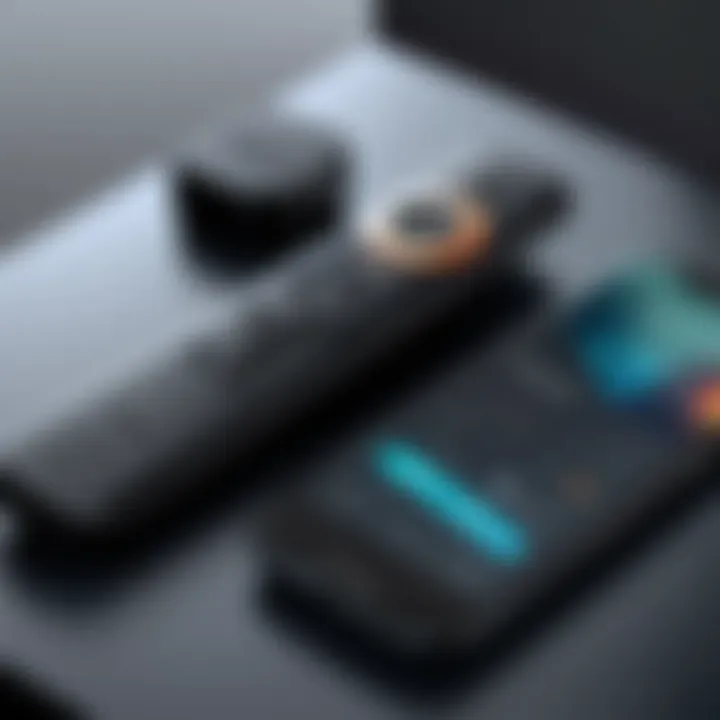
Losing a remote is an all-too-common reality, and while it might seem trivial, it highlights the dependency on a singular accessory to operate the device. The Firestick’s functionality stands compromised, placing limitations on how users interact with the device. Replacement remotes exist, but those are often costly. Users must weigh pros and cons when deciding whether to invest in a replacement or explore alternative connectivity options.
Another aspect to consider involves potential delays when accessing customer service for remote replacement. Long wait times can leave users without easy access to their favorite streaming content.
In light of all this, it’s vital to have handy tools and alternative solutions ready for swift use. This could include downloading compatible apps on smartphones before problems arise, ensuring connectivity doesn’t take a backseat when physical remotes are lost.
"Planning ahead is half the battle in tech management. The smarter your prep, the smoother your ride."
Equipping oneself with knowledge and resources is fundamental. Knowing your options empowers you, and in tech, that’s the name of the game. Being technologically savvy during remote losses can save you a world of frustration.
Pre-requisites for Connecting a Phone to Firestick
To connect your smartphone to an Amazon Firestick without a remote, it’s vital to understand certain pre-requisites. This understanding can save a lot of headaches and streamline the process, allowing for an efficient setup. Connecting your phone not only makes the streaming experience more accessible, but it can also enhance the overall entertainment options you have at your fingertips.
Compatibility Requirements
When you think about connecting a phone to your Firestick, the first thing to chew on is compatibility. Almost all smartphones should be able to pair with the Firestick, but the catch is that the specific operating system and version matters.
- Operating System: Ideally, you need an Android or iOS device. For Android devices, make sure you are running on version 4.2 or higher, as that’s when compatibility with the Firestick generally improves. For iOS users, having iOS 10 or later is ideal.
- Firestick Model: Not all Firestick models are the same. You'll want to ensure your Firestick is updated. Older versions may not support certain apps essential for connectivity.
- Application Availability: Ensure that the apps you plan to use, either the Amazon Fire TV app or third-party options, are available on your device's app store. For example, if you are using an older device that doesn't support newer applications, this could present a barrier to connection.
By fulfilling these compatibility requirements, you pave the way for a smoother connection experience, offering a hassle-free setup.
Network Considerations
Another critical consideration is the network setup. Connecting your phone and Firestick on the same Wi-Fi network is not just important; it’s essential.
- Wi-Fi Connection: Both devices must be on the same Wi-Fi network. This forms the backbone for communication between the phone and the Firestick. If they are in different lanes, connectivity simply won’t happen.
- Router Settings: Sometimes, your router might have settings that could interfere with device communication. Check if you have enabled guest mode or any platform-specific limitations that stop devices from connecting.
- Bandwidth: A steady Wi-Fi connection is preferable. If you have multiple devices hogging the bandwidth, this can lead to a frustrating experience. Make sure your connection is stable enough for seamless streaming.
In sum, paying close attention to these pre-requisites ensures that you sidestep the usual pitfalls. It’s clear that being aware of the compatibility requirements and network specifications leads to a more fluid experience when connecting your smartphone to your Firestick.
Methods for Connecting Without Remote
Connecting your smartphone to a Firestick without a remote can seem daunting, but it’s crucial in today’s tech-driven world where physical remotes can often go missing or break. This section explores various methods that not only make the connection possible but also showcase the versatility and functionality of the Amazon Firestick when paired with a smartphone. Each method brings specific benefits and considerations that enhance the user experience, offering flexibility in how users can control their streaming devices.
Using the Amazon Fire TV App
The Amazon Fire TV app serves as a primary tool for those looking to connect their smartphone to their Firestick. It's not just an alternative; it's an extension of the Firestick capabilities, directly turning your smartphone into a functional remote.
To start, the app is available for both iOS and Android devices, ensuring compatibility across a wide array of smartphones. Once downloaded, you simply need to connect both devices to the same Wi-Fi network and follow the prompts to establish the connection. The app provides a virtual remote interface, allowing you to navigate menus, input text using your phone’s keyboard, and even access voice control features.
Utilizing Third-Party Remote Control Apps
In addition to the Amazon Fire TV app, there are several third-party remote control apps that can be used to connect your smartphone to Firestick without a traditional remote. Apps like AnyMote, Unified Remote, and Cetus Play offer unique features that cater to specific user preferences.
These applications might supprt a variety of devices and even provide enhanced functionalities like programmable buttons or layout customizations that can make navigation even easier. However, compatibility and network setups might vary, so it’s advisable to check the app specifications before diving in.
Screen Mirroring Techniques
Screen mirroring is another powerful method for connecting your smartphone to the Firestick. This allows you to display content from your phone directly onto your TV, granting a rich viewing experience without needing a remote.
Miracast
One notable technique is Miracast. It sets itself apart as a wireless display standard that lets devices like smartphones project their screen onto a compatible receiver like Firestick.
The primary draw of Miracast is that it operates independently of a Wi-Fi network, using Wi-Fi Direct technology. This means you can mirror content even in locations without a robust internet connection. This can be particularly beneficial when showcasing photos or videos during gatherings. However, it’s essential to note that device compatibility plays a crucial role, as not all smartphones support Miracast.
Google Cast
On the other hand, Google Cast promotes another approach to connect your phone with the Firestick. It thrives on a Wi-Fi network, sending content from the phone to the Firestick, while allowing the phone to act as a control device. This method shines in supporting a wide range of apps—for instance, streaming services that natively support Google Cast such as YouTube and Netflix.
One notable feature of Google Cast is its ability to let multiple users cast simultaneously, enhancing shared experiences. Nevertheless, managing connections can be trickier if multiple devices are on the network, which could present some minor connectivity issues.
In summary, whether it's through the Amazon Fire TV app, third-party apps, or various mirroring techniques, there are numerous ways to bridge the gap left by a missing remote."
This multitude of connection options ensures that users can find the method that best suits their needs, no matter the circumstance.
Detailed Steps for Each Connection Method
In this part of the guide, we will delve into the crucial steps necessary to connect your smartphone to the Firestick without needing a remote. Almost everyone experiences the frustration of a missing remote, leading to a compelling need for alternative connection methods. Understanding the distinct processes helps ease the transition, providing a greater sense of control over your entertainment experience. It also empowers users to navigate various connectivity options, potentially leading to a more streamlined viewing experience.
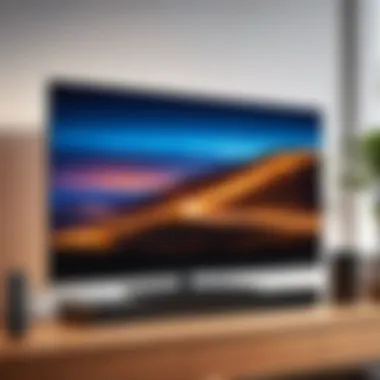
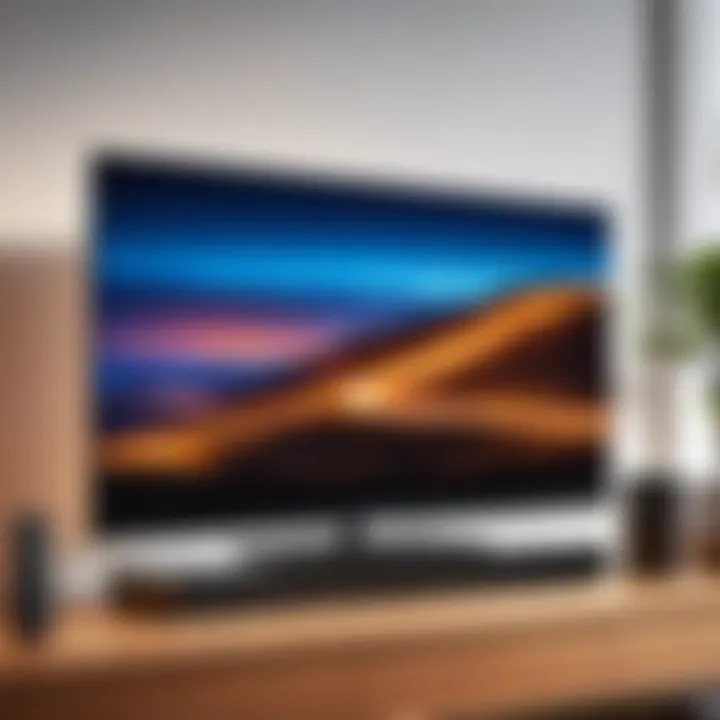
Connecting via the Amazon Fire TV App
The Amazon Fire TV app is a cornerstone method to connect your phone to the Firestick when the remote has gone missing. This app not only bridges the gap when the physical remote isn’t available, but it also brings additional functionalities which enhance user experience. With features like voice control and navigation shortcuts, it becomes an attractive choice for many users.
Downloading the Application
Downloading the Amazon Fire TV app is quite simple; it’s available on both Android and iOS platforms. Once you navigate to your app store of choice, searching and installing the app only takes a matter of moments. A notable characteristic of the app is its user-friendly interface, which makes it a preferred option for most users.
The app’s unique feature is its ability to offer all the functionality of a physical remote, plus some extras like keyboard input, which is particularly handy for searching or typing passwords. One of its advantages is that it keeps your experience consistent across different devices, but do keep in mind that functionality can sometimes be limited by connectivity issues.
Establishing the Connection
Once the app is downloaded, establishing a connection between the app and Firestick is a key step. Users will need to ensure that both devices are on the same Wi-Fi network; this is a critical requirement that many overlook. Upon launching the app, it automatically detects available Firestick devices, allowing for a quick and fluid connection process.
The beauty of this connection method lies in its immediacy. You simply tap the device listed, and voilà, you’re ready to go! A unique feature here is the remote-like gesture controls, which mimic the physical button tap. Though it’s seamless for many, some users may face challenges due to network lag or inconsistent Wi-Fi signals affecting the app interface’s responsiveness.
Setting Up Third-Party Apps
Third-party applications cater to a diverse audience, providing alternatives for those who may want additional functionalities or different user experiences. These apps range widely, each boasting its own features, thus enriching your ability to control the Firestick. Many users have found success with these applications, maintaining flexibility outside of Amazon's offerings.
Recommended Applications
There are a few standout third-party apps worth mentioning, such as Uniform Remote and CetusPlay. These apps are well established in the tech community due to their versatility in managing devices like Firestick alongside other smart home gadgets. They provide intuitive interfaces that many tech-savvy individuals appreciate.
Moreover, the unique aspect of these applications is their proposed functionalities that go beyond basic remote control. For instance, these apps frequently offer features like media playback control and smart home integration. This added layer can be beneficial but may require additional setup steps compared to the native Amazon app.
Connection Steps
Connecting with third-party apps typically involves a few steps. After downloading the desired app, follow the instructions for pairing it with your Firestick. Most apps will guide you through this process, ensuring that your phone discovers the device.
One key feature of these connection steps is the adaptability; many applications allow for customization of remotes according to user preference. However, navigating through third-party apps can sometimes feel more cumbersome than using the built-in app, leading to a potential learning curve.
Implementing Screen Mirroring
Screen mirroring presents another viable method for connecting your smartphone to the Firestick without the need for a remote. This technique allows you to display your phone's screen on your television, effectively bypassing remote limitations.
Enabling the Feature on Firestick
To enable screen mirroring on your Firestick, you need to navigate to the settings menu. This usually entails a bit of scrolling, but it’s not overly complicated. The vital characteristic of this feature is its simplicity; once activated, the Firestick will be able to detect any compatible devices in the vicinity.
A unique aspect is its flexibility; it supports both Miracast and Google Cast, appealing to a broader audience. However, users must ensure their smartphone supports the required mirroring standards, as compatibility can sometimes be an issue.
Connecting from Your Smartphone
Lastly, the connection process from your smartphone is very straightforward once you have enabled mirroring. Depending on your phone model, the feature can often be found in the display settings. Upon selecting the Firestick from the list of available devices, the connection typically occurs with minimal hassle.
This approach is favorable because it allows users to interact with content directly from their phone. However, one note of caution—this connection method may suffer some latency, especially if your network isn't optimal. This could affect the performance, particularly when viewing live content or playing games, so be sure to keep an eye on your network stability.
Troubleshooting Common Issues
Connecting your smartphone to an Amazon Firestick without a remote can sometimes feel like trying to find a needle in a haystack. This section focuses on dealing with common issues that might crop up during your setup or connection process. Understanding how to troubleshoot these problems effectively makes your viewing experience smoother, lets you enjoy your shows without frustration, and saves you from unnecessary replacements or deep-dives into tech forums.
Connection Failures
Connection failures are one of the more infuriating hurdles that users may encounter. These issues can stem from a variety of sources, whether it’s a weak Wi-Fi signal, Firestick update requirements, or even compatibility concerns. Here's a breakdown of common reasons and solutions:
- Signal Strength: Ensure your Wi-Fi connection is strong. If your router is too far from the Firestick, it might not catch the signal well. Consider repositioning the router or moving closer to it.
- Restart Devices: Sometimes, a good ol' restart is all you need. Restarting both your smartphone and Firestick can resolve underlying issues that interfere with connection.
- Check Compatibility: It’s crucial to check if both your smartphone and Firestick are compatible with the connection method you’re using. Look for updated versions of required apps that might support connectivity.
If you're still having trouble after these steps, look for network-related problems, such as checking if other devices on the same network are functioning well.
Application Glitches
Another sticking point is when the applications you are using to connect the Firestick and smartphone face glitches. This can often happen due to various reasons, but understanding the common culprits can help in resolving these.
- App Updates: Applications like the Amazon Fire TV app often require updates to fix bugs and improve stability. Ensure you have the latest version installed on your device to avoid unnecessary headaches.
- Cache and Data Issues: If an app is sluggish or crashing while trying to connect to the Firestick, it might be helpful to clear its cache. This refresh can sometimes do wonders. Go in your phone's settings under Apps, find the application, and then clear cache.
- Reinstallation: If all else fails, uninstalling the problematic app can be a smart move. After removing it, go ahead and reinstall the latest version from your app store. Sometimes, the clean slate approach works best.
"Troubleshooting can be tedious, but it’s often the quickest way back to enjoyment. Knowing how to nip these issues in the bud saves you a lot of time and stress."
Being familiar with these common pitfalls prepares users to handle their Firestick connections more efficiently. Remember that issues arise from various angles, so patience and a little bit of knowledge can go a long way in ensuring a seamless streaming experience.
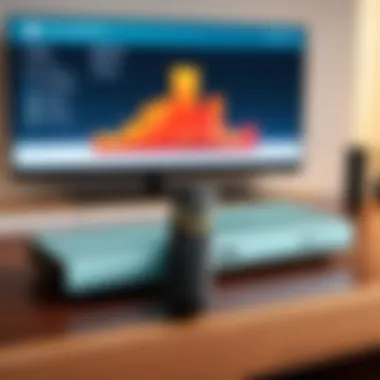

Exploring Alternatives for Firestick Control
When it comes to managing your Firestick, relying solely on the remote can feel limiting, especially when that little gadget goes missing or runs out of batteries. This section dives into the world of alternatives, spotlighting creative, tech-savvy options to control your device effectively. By thinking outside the box, users can enhance their streaming experience while sidestepping common frustrations. These methods not only provide a workaround for remote control mishaps but also introduce new ways to interact with your Firestick, ultimately making the viewing experience more enjoyable.
Using Voice Assistants
One of the most convenient ways to control your Firestick is through voice assistants like Amazon Alexa or Google Assistant. With just a few words, you can launch apps, search for content, or even play, pause, and rewind shows. It's like having a personal assistant dedicated to your entertainment needs! For instance, rather than scrolling through channels, you can simply say, "Alexa, play The Office on Prime Video," and watch as your wish is granted instantly.
This hands-free control is especially beneficial for users who might struggle with navigating menus using tiny remotes. Additionally, these voice commands can be executed from a distance, allowing you to remain cozy on your couch without interruption. Here are some considerations for this method:
- Voice Command Compatibility: Ensure that you have a Firestick model that supports Alexa integration.
- Microphone Setup: Make sure your Alexa devices are positioned within range to accurately catch your commands.
- Skill Activation: Sometimes, you may need to enable specific skills in the Alexa app to use certain services.
With voice assistants, the future of remote controls is here; they enrich the user experience by providing speed and ease of use.
Integrating Smart Home Devices
Another robust option for controlling your Firestick is through integration with smart home devices. If your home is already outfitted with gadgets like smart speakers, smart displays, or other smart home hubs, you can extend their capabilities to your Firestick.
This integration allows for synchronized control where your Firestick responds to commands issued via your smart devices. For example, you might say, "Hey Google, switch to Netflix on the living room TV," and your smart home ecosystem will handle the rest.
Here are a couple of benefits you might find:
- Centralized Control: Managing multiple devices from one hub simplifies the user experience immensely.
- Enhanced Automation: You can set routines. For instance, when you say, "movie time," lights dim, and your favorite streaming app opens on Firestick, creating the perfect viewing atmosphere.
However, you will want to keep in mind:
- Compatibility Checks: Not all devices work seamlessly, so ensure your devices are compatible before setting up.
- Configuration: This may require some initial setup to link your devices to your Firestick correctly.
Incorporating smart home devices not only serves the practical function of controlling your Firestick but also aligns with a broader tech-savvy lifestyle. These alternatives not only expand how you interact with your device but also enhance your overall home entertainment experience.
The Role of Updates in Firestick Functionality
In the fast-paced world of technology, updates are akin to the oil that keeps the machine running smoothly. For Amazon Firestick users, understanding the significance of updates ensures that they maximize their device's features and compatibility. Whether it’s adding new functionalities or patching up security loopholes, updates play a critical role in enhancing the overall experience. Without these updates, users may find themselves grappling with connectivity issues or a lack of access to the latest apps.
Importance of Firmware Updates
Firmware updates are like an upgrade for the brain of your Firestick. They allow the device to operate more efficiently, incorporating bug fixes and improving performance. When a Firestick is updated, several things happen:
- Enhanced Features: New features come to life, providing users with the latest offerings. For instance, an update might include a new interface that makes navigation feel seamless.
- Security Fixes: Updates often address vulnerabilities that could leave the device at risk. In a world where data breaches are all too common, having the latest security measures is non-negotiable.
- Improved Performance: Users often notice smoother streaming and reduced buffering times after an update. This can be particularly beneficial for those who enjoy binge-watching series or live sports.
On the flip side, delaying updates may lead to compatibility problems with apps or services that evolve over time. If your device isn't cooperating, you might end up stuck in a limbo with outdated functionalities.
"Regular updates can breathe new life into your Firestick, making it as responsive as the day you bought it."
How Updates Affect Connectivity
The connectivity of your Firestick is largely determined by its ability to interact with other devices and services. When updates are rolling out, they often include modifications that can improve or hinder connectivity based on various factors:
- Network Protocols: Updates may introduce better handling of the Wi-Fi protocols or enhancements in Bluetooth connectivity. This means that streaming from other devices or connecting via mobile phones could work more seamlessly.
- App Compatibility: With constant updates from streaming platforms, if your Firestick’s software is not up to date, it might not support the latest versions of apps. This could lead to crashes or the inability to access certain features.
- Connecting Devices: If you’re connecting your phone to the Firestick, an updated firmware can ensure that this process is as smooth as butter. Sometimes older firmware can cause glitches or even outright failures.
In essence, keeping your Firestick current isn’t just a recommendation; it’s a necessity. It enables a better user experience, enhances functionality, and supports seamless integration with other devices, making your smart setup more effective.
Final Thoughts on Connecting Without a Remote
When it comes to the convenience and flexibility of entertainment systems, the ability to connect your devices is paramount. In this section, we explore the significance of being able to connect your phone to the Firestick without using a physical remote. This not only enhances user experience, but it also opens up a world of possibilities for streaming, browsing, and accessing content at your fingertips.
Summarizing Connection Options
There are various methods to establish a connection between your phone and Firestick without the remote. Utilizing the Amazon Fire TV App tends to be the most straightforward approach. By merely downloading the app, you can navigate the interface of the Firestick with ease.
Here’s a quick summary of the connection options discussed:
- Amazon Fire TV App: Direct and user-friendly, ideal for most users.
- Third-Party Remote Control Apps: Provides versatility, especially if you use devices outside the Amazon ecosystem.
- Screen Mirroring: Great for those who want to display content from their smartphone directly onto the television, although it requires compatible features like Miracast or Google Cast.
Each method has its pros and cons, tailoring to different user preferences and technical abilities. Understanding these options allows individuals to select a method that best fits their lifestyle and tech-savviness.
Evaluating Long-term Solutions
In evaluating long-term solutions for connectivity without a remote, it's vital to prioritize adaptability and ease of use. Many smartphone users may not always carry the Firestick remote, leading to potential hiccups in watching content.
Here are a few considerations for developing a robust and future-proof connection strategy:
- Consistent Updates: Ensure that both your Firestick and connection apps are regularly updated. This helps mitigate potential glitches and enhances communication between devices.
- User Preferences: Stay updated with which connection methods suit your day-to-day activities. If you find yourself mirroring content more often, consider devices that bolster compatibility with screen mirroring technologies.
- Evolving Technology: With advancements in smart home technologies, many phone manufacturers are integrating firestick functionalities into their devices. Keep an eye on such integrations to simplify long-term connections between devices.
- Support Resources: Platforms like Reddit and Facebook are useful for troubleshooting and community support, helping users navigate through any issues when trying to connect without a remote.
In summary, connecting your phone to Firestick without a remote is not only a matter of convenience but also about future-proofing your entertainment experience. It opens the door to innovative solutions, making media consumption more accessible than ever.



